Can Solar Cookers Save the World?
This old technology is more important than ever.
THIS ARTICLE IS ADAPTED FROM THE MAY 28, 2022, EDITION OF GASTRO OBSCURA’S FAVORITE THINGS NEWSLETTER. YOU CAN SIGN UP HERE.
Last week, I gave myself both a sunburn and a crash course in solar cooking.
This culinary vacation from my kitchen started when I unearthed a strange cardboard contraption in the attic. It looked like a flattened box, but unfolding it revealed printed instructions on one side and a gleaming, chrome-painted lining on the other.
The device was a solar oven. Specifically, a CooKit, a cardboard oven created by Solar Cookers International, a non-profit based in Sacramento, California. Solar ovens are more than science fair experiments. For decades, SCI has used them to fight all manner of social, economic, and environmental ills, from the respiratory illnesses caused by smokey cookfires to the high price of fuel.
The CooKit solved one issue for me this week: how to cook during a heatwave without heating up the house. The last few days, I’ve roasted vegetables and baked cakes in my backyard. Sure, each dish took twice as long as usual, but they required no more attention than adjusting the oven every so often to follow the sun.
Solar cooking has been around for hundreds of years, but the case for it (no fuel, zero pollutants, no need to use an indoor stove during ever-hotter summers) is stronger than ever. Could this be the dawn of a new era of cooking?
Sunny Science
In Enlightenment-era Switzerland, a Renaissance man by the name of Horace-Bénédict de Saussure had a space-age idea. In 1767, the famed mountaineer-physicist-meteorologist layered together sheets of glass to create the first solar oven, even hauling the contraption up and down the Alps to test it at different altitudes and temperatures.
The following centuries saw a slew of inventors follow in his footsteps. They used glass, reflectors, and curved mirrors to direct light to a focal point, such as a pot. The pot absorbs heat, which is trapped by a glass or plastic cover.
Though solar-oven cooking takes longer than the average stove, the heat is so low and even that there’s no need to stir or even monitor the food. Burning food in a solar oven is almost impossible.
Even in the early days of solar power, people recognized its potential. Mountaineers and militaries have constantly experimented with solar cooking over the years, since there’s no need to haul heavy fuel with a solar oven on hand.
Many restaurateurs have also used it as a compelling draw. During the Qing dynasty, a Chinese mathematician used mirrors and reflectors to start a sun-roasted duck business. Today, restaurants in Armenia, Chile, and Thailand all cook with sun power.

Solar Cookers For All
Cooking with the sun has many champions. Smoky fires and high fuel prices are causing environmental, health, and economic damage to families across the world.
I chatted with Caitlyn Hughes, the executive director of Solar Cookers International, about her organization and the potential of solar cookers. This interview has been edited and condensed for clarity.
How would you describe your mission?
There’s about 2.6 billion people worldwide who are cooking over open fires, which is incredibly harmful to people’s individual and family health, as well as our planet.
People who are cooking this way don’t have other choices. They have to cut down trees, which also contributes to climate change and deforestation. And so when we are able to offer the solution of solar-thermal cooking, people can cook with no emissions and no pollutants.
What is your day-to-day like at SCI?
Solar Cookers International has consultative status with the United Nations. I remember meeting the Minister of Energy from Uganda at one of these UN climate conferences, and he was just like, “This is the solution that people need. I cannot wait to take this back and show more people in my country.”
We manage the world’s largest online database of solar cooking information, which is solarcooking.org. It’s got about 1,800 pages of information organized by country. You can find free designs on how to build a solar cooker. You can learn where to buy a solar cooker. You can learn more information than you probably have time to read today.
And you also make and distribute solar ovens, right? I own a CooKit.
The CooKit is still a fabulous design. Solar Cookers International actually designed the CookIt by request of the United Nations Refugee Agency because they wanted something that could be made easily and affordably anywhere around the world.
Is there a part of the world that SCI particularly focuses on?
Ideally, worldwide! Everywhere the sun shines. We’ve been working in Kenya for quite a few years now as there’s a really good fit in terms of the need and opportunity for impact as well as the climate.
We’re doing work in the Kakuma refugee camp. The refugees don’t have enough fuel to cook the food rations they’re given. So they often have to trade some of their food rations for cooking fuel.
India also has a really strong presence in terms of solar cooking. We’ve got three global advisors there doing amazing work in institutional-scale solar cooking. So, for example, rooftop steam systems that can cook for thousands of people at a time.
Do the staff at SCI actually use solar cookers?
We all love to solar cook! It was over 100 degrees in Sacramento [yesterday]. The last thing we want to do here is turn on our oven.
I love to cook lasagna, enchiladas, quiche, brownies, cookies … Corn on the cob is actually the easiest. You just put corn on the cob—still with the husks on—into the solar cooker and check on it in maybe an hour, an hour and a half, and you get really sweet, juicy corn. Cooked by the sun.

How to Cook With the Sun
Want to start solar cooking but don’t have the foggiest idea where to start? Here are some tips!
- There are plenty of solar oven-making tutorials online (SCI even has one for making a CooKit, which is a panel-style cooker), but they’re also available to buy at stores such as REI.
- Certain foods suit solar cooking better than others, like stews and baked goods. Generally, I’ve been making dishes that would do well in an oven.
- Solar cooking depends on long, low heat. This means many hours of cooking! But burning food in a solar oven is nearly impossible. (Unless you’re using a super-powered parabolic oven.)
- Solar ovens can cook totally unattended. You can even leave your house while your food cooks! It’s actually better not to check on your food too often, as that can let heat escape.
- My cardboard CooKit can heat food to more than 220ºF. Seems low, but chicken is cooked once it reaches 165ºF.
- On a sunny day, you can cook twice with a solar cooker: starting in the morning for a midday meal and in the afternoon for an evening meal. One tip I came across is that the best time for solar cooking is when your shadow is shorter than your actual height, indicating that the sun is high in the sky.
Gastro Obscura covers the world’s most wondrous food and drink.
Sign up for our regular newsletter.



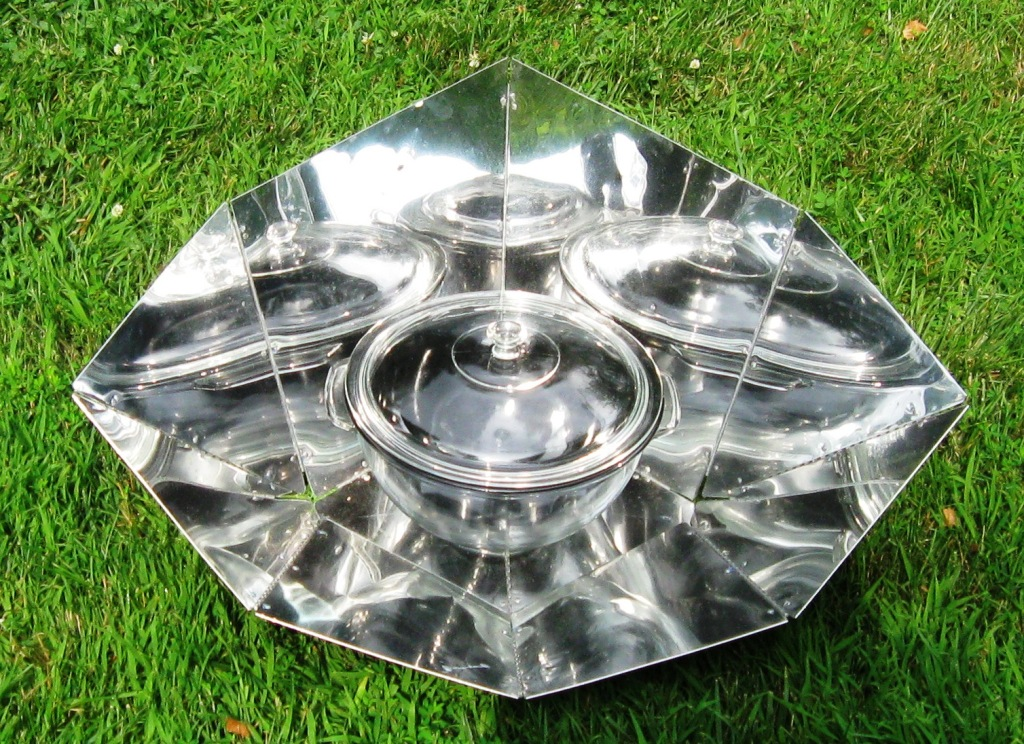





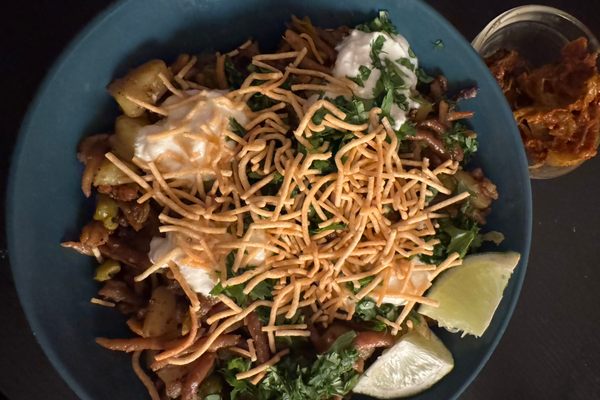
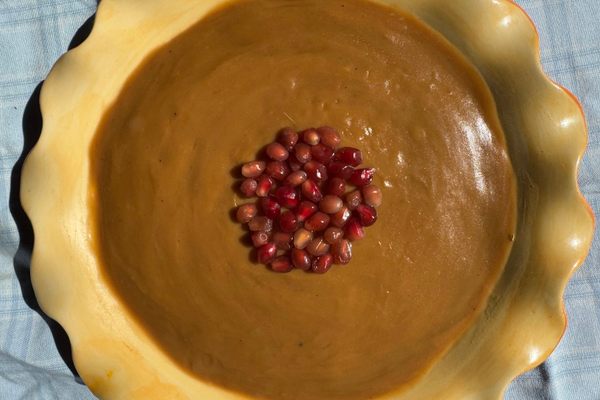









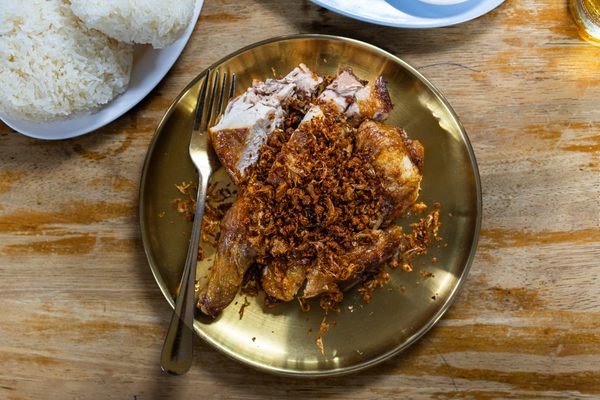
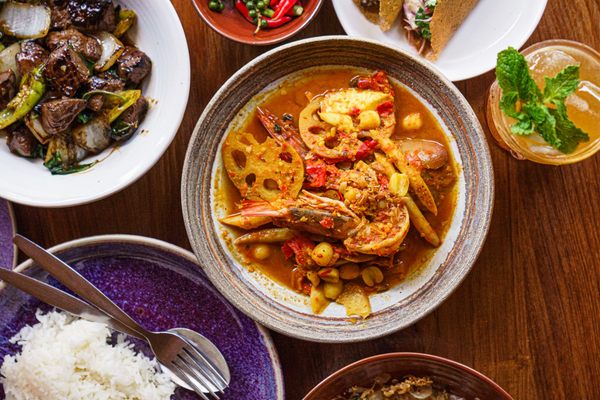
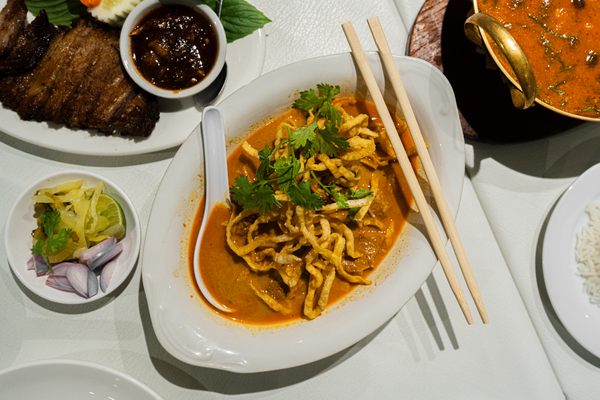

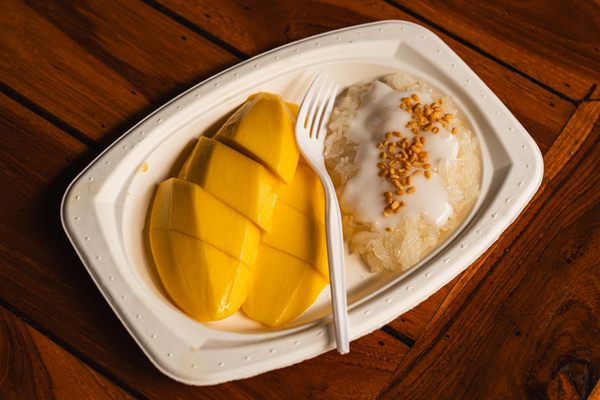


Follow us on Twitter to get the latest on the world's hidden wonders.
Like us on Facebook to get the latest on the world's hidden wonders.
Follow us on Twitter Like us on Facebook